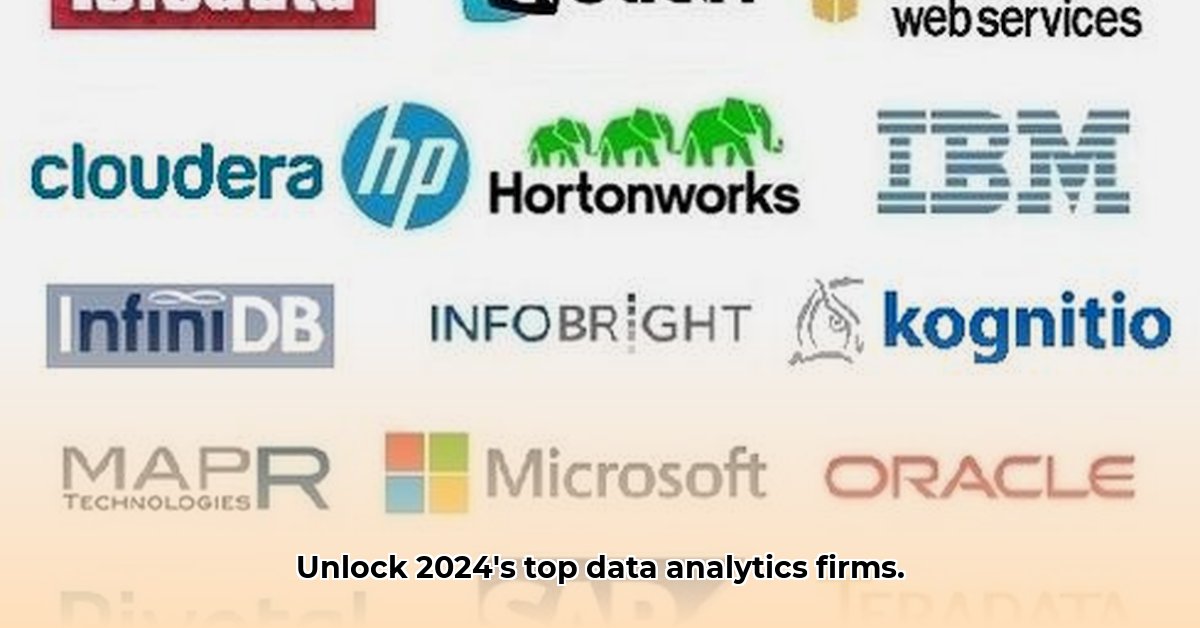
The data analytics market is booming, projected to surpass $600 billion by 2029. This explosive growth presents immense opportunities but also significant challenges. Choosing the right data analytics partner is crucial for success, requiring a clear understanding of your needs and a multi-faceted approach to evaluation. This review and instructional guide will help you navigate this dynamic landscape.
Data Analytics Companies: Navigating the 2024 Landscape
The data analytics industry is experiencing a rapid transformation, driven by advancements in artificial intelligence (AI), machine learning (ML), and the rise of user-friendly, low-code/no-code platforms. While established players like SAS and Teradata remain prominent, a new wave of specialized firms and innovative AI tools are reshaping the competitive landscape. This guide provides actionable insights for businesses of all sizes, investors, and even data analytics firms themselves.
Market Trends: AI, Cloud Computing, and Specialization
Several key trends are shaping the future of data analytics:
- AI and ML Dominance: AI and ML are enhancing data analysis accuracy and power, enabling more sophisticated insights and predictions.
- User-Friendly Tools: Low-code/no-code platforms are democratizing access to data analytics, empowering non-technical users.
- Cloud Computing's Rise: Cloud-based solutions provide scalability, cost-effectiveness, and flexibility, becoming the preferred choice for many organizations.
- Industry Specialization: A growing number of firms are focusing on specific sectors, offering tailored expertise and solutions.
How can your organization leverage these trends to maximize the value of your data? The answer depends on your specific situation.
Choosing the Right Data Analytics Partner: A Tailored Approach
The ideal data analytics company varies significantly based on your organization's size, needs, and strategic goals.
1. Small and Medium-Sized Businesses (SMBs):
- Short-Term: Prioritize user-friendly tools that integrate seamlessly with existing systems, ensuring rapid implementation and demonstrable ROI.
- Long-Term: Invest in team training to build internal data literacy and consider cloud-based solutions for scalability and cost efficiency.
2. Large Enterprises:
- Short-Term: Simplify vendor relationships by selecting comprehensive solutions that incorporate data governance and AI capabilities.
- Long-Term: Develop a cohesive data strategy encompassing AI/ML, robust security measures, and regulatory compliance. Hybrid cloud solutions can provide optimal flexibility.
3. Data Analytics Firms:
- Short-Term: Specialize in a niche market or leverage cutting-edge technologies to differentiate your services. Build strong AI/ML expertise and prioritize data governance.
- Long-Term: Invest in R&D to stay ahead of the curve, refine marketing strategies, and consider strategic partnerships or mergers to expand capabilities.
4. Investors:
- Short-Term: Analyze market trends and projections across different data analytics segments, assessing the financial health and innovation potential of target companies.
- Long-Term: Identify high-growth sectors within data analytics, focusing on companies with disruptive technologies. Monitor regulatory changes for potential impacts on investment decisions.
Isn't it fascinating how different stakeholders have such diverse needs within this rapidly evolving market?
Mitigating Risks and Ensuring Compliance
The effective utilization of data analytics services requires careful risk management and adherence to regulatory compliance.
| Risk Category | Potential Risks | Mitigation Strategies |
|---|---|---|
| Data Security (Cloud) | Data breaches, vendor lock-in | Implement robust security measures, perform regular audits, and choose vendors with strong security credentials and transparent policies. |
| AI-Driven Systems | Algorithmic bias, lack of transparency | Prioritize algorithmic fairness, ensure transparency in model development, and rigorously test for bias. |
| Data Governance | Inconsistent data quality, regulatory non-compliance | Establish clear data governance policies, implement supporting technologies, and provide comprehensive staff training. |
Legal compliance is paramount. Regulations like GDPR and CCPA demand strict adherence. Non-compliance can result in significant financial penalties and reputational damage.
Choosing the Best Data Analytics Company: A Step-by-Step Guide
Selecting the right partner is a strategic decision that goes beyond simply comparing features. It's about finding a true collaborative partner that understands your business goals.
Step 1: Define Your Objectives: Clearly articulate your business objectives. What problems are you seeking to address with data analytics? What types of data do you have? What’s your budget?
Step 2: Evaluate Potential Partners: A multi-faceted approach is necessary:
- Industry Expertise: Verify experience in your specific sector.
- Technological Capabilities: Assess their technology stack, focusing on capabilities like AI, ML, and cloud solutions.
- Client Feedback: Analyze testimonials and case studies. Look for quantifiable results and positive client feedback.
- Communication & Collaboration: Evaluate their responsiveness, transparency, and willingness to collaborate.
- Contractual Terms: Carefully review the contractual agreement and consider a pilot project.
Step 3: Long-Term Sustainability: Successful partnerships necessitate ongoing monitoring, evaluation, and adaptation.
- Performance Monitoring: Regularly track performance against predefined metrics.
- ROI Assessment: Quantify the return on investment (ROI) to ensure your investment is generating value.
- Scalability Planning: Evaluate the firm's ability to scale its services as your requirements evolve.
- Contractual Review: Periodically review and update contractual terms to meet your changing needs.
By following this structured approach, you'll significantly enhance your ability to choose a data analytics partner that drives tangible business value. Remember, this is an ongoing process requiring continuous monitoring and adaptation.